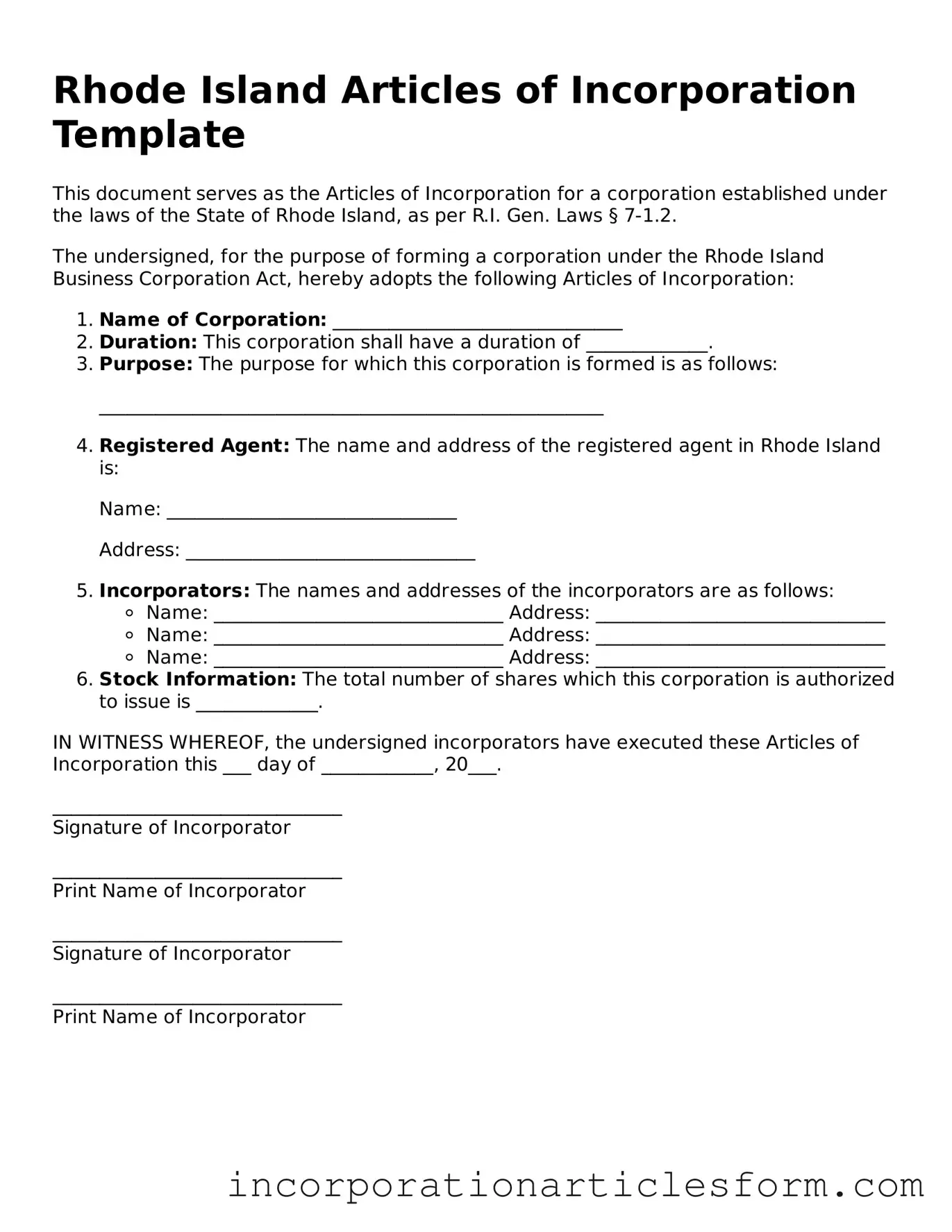The Rhode Island Articles of Incorporation form is similar to the Certificate of Incorporation used in many states. Both documents serve as the foundational paperwork needed to legally establish a corporation. They typically require details such as the corporation's name, purpose, registered agent, and the number of shares authorized. This document is filed with the state to create a legal entity separate from its owners, providing liability protection and allowing the corporation to operate independently.
Another document comparable to the Articles of Incorporation is the Bylaws. While the Articles outline the basic structure and purpose of the corporation, Bylaws provide the internal rules governing its operations. They detail the rights and responsibilities of shareholders, directors, and officers. Together, these documents create a comprehensive framework for the corporation's governance and management.
The Operating Agreement is similar to the Articles of Incorporation but is specific to Limited Liability Companies (LLCs). This document outlines the management structure and operating procedures of the LLC. Like the Articles, it provides essential information about ownership and responsibilities, but it focuses on the unique needs of an LLC rather than a corporation.
The Statement of Information is another related document. Required in some states, this document provides updated information about the corporation after it has been formed. It often includes details about the corporation's address, officers, and registered agent. This helps maintain transparency and keeps the state informed about the corporation's current status.
Incorporation papers in other states, like the Articles of Organization in Wyoming, serve a similar purpose. They establish the legal existence of a business entity, whether it be a corporation or an LLC. Each state has its own requirements and terminology, but the core function remains the same: to create a legal entity that can conduct business and protect its owners from personal liability.
The Partnership Agreement is another document that shares similarities with the Articles of Incorporation, particularly for partnerships. This agreement outlines the terms of the partnership, including the roles of each partner, profit-sharing arrangements, and procedures for resolving disputes. While it is not for corporations, it serves a similar purpose in defining the structure and governance of a business entity.
The Certificate of Formation is akin to the Articles of Incorporation for LLCs. This document is filed with the state to officially create the LLC. It includes key information such as the LLC's name, registered agent, and the duration of the business. Like the Articles, it establishes the legal framework for the entity's existence.
The Corporate Resolution is also related to the Articles of Incorporation. This document records decisions made by the corporation's board of directors or shareholders. It formalizes actions such as approving contracts or authorizing expenditures. While it does not create the corporation, it is essential for documenting important corporate actions and ensuring compliance with internal governance.
Finally, the Annual Report is similar in that it requires corporations to provide updated information to the state. This document typically includes financial statements, changes in management, and other relevant data. It helps maintain transparency and ensures that the corporation remains in good standing with the state.
